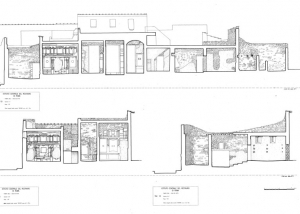 ARCHAEOLOGY AND TERRITORY
ARCHAEOLOGY AND TERRITORY
The study of ancient landscapes and settlements, virtual reconstructions of landscapes and sites are valid tools for understanding the evolution of history.
The study of ancient landscapes and settlements, virtual reconstructions of landscapes and sites are valid tools for understanding the evolution of history.
The documentation aimed at the preservation and fruition of archaeological sites represents one of the rare possibilities to make visible portions of settlements that testify the historical evolution from prehistory to today. Archaeological excavations reveal traces of built-up areas, structures, stratigraphy and artefacts, ceramic and bio-archaeological finds, which convey the historical importance that these sites cover.


Studio 3R is a valid support for the research activity that Universities and territorial preservation Institutions have always conducted, and represents a model of integration between archaeological study, computing and virtual simulation.
An example among many is represented by the works carried out in collaboration with the University of Naples ‘Suor Orsola Benincasa’ in Vivara (Procida, Naples). Over the years, several three-dimensional surveys and reconstructions of the soil morphology of the island of Vivara have been carried out, maintaining a single mapping system on which the data have been updated, starting with the first topographic general imaging plant dating back to the eighties. From these two-dimensional maps, they moved to 3D elaborations to create three-dimensional terrain models, with detailed and geo-reported surveys of the most significant areas.
The models were not used for the sole purpose of studying but as in the case of the Punta Alaca, were instrumental for the documention of the soil morphology for the bio-geo-engineering recovery and safeguarding of the north north/west slope (interventions carried out by ENEA).
The same technique of digital documentation and digital processing makes it possible to reconstruct the virtual paleo-environment by integrating topographic, archaeological and paleobotanical data to define the environment in different epochs.
 OUR WORKS
OUR WORKS






